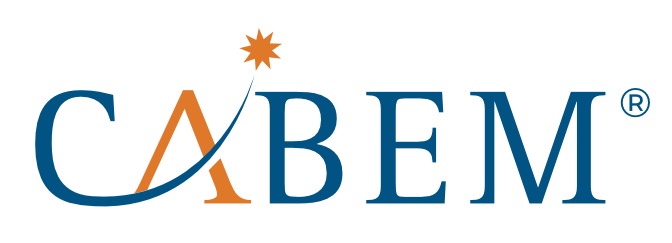Companies of all sizes use Human Resource Management Systems (HRMS) and Human Capital Management (HCM) tools such as Workday or SAP Successfactors to manage their employees. Tracking and managing all HR functions is a complex undertaking, and with the technology available today, it is clear that software is the best solution to this challenge.
As the changing workforce management landscape makes this task more complex, companies are using other software to supplement and augment their HR systems, such as competency and skills tracking software. Competency software is similar to an HRMS in that it contains employee information such as job function, history, and documents. Competency software cannot replace an HRMS, but can improve its functionality because it focuses on improving the workforce by identifying the skills and qualifications required for reach role, location, department, or other group, as well as training to and fulfilling these requirements.
A competency system allows a manager, admin, or SME to then match or identify employees that are competent to the skills of each role and group. Depending on an organization’s permissions, individual employees will have access to their information as well.
While competency software systems are still in the early adoption stage, there are a variety of different HR Systems available today, and most cover the same basic functions:
-
Compensation
-
Skills Management
-
Policy and Documentation
Compensation
An HRMS will contain an employee’s payroll information as well as his or her benefits and the insurance plans available. Some systems such as Bamboo HR have individual profiles for each employee to see this information on their own, and for a manager to see the employees he or she is responsible for.
Giving employees visibility into his/her own profiles allows them to input timecard information as well as request vacation days and time off themselves, driving down managerial costs. A comprehensive competency system can also contain payroll information as part of a user’s profile, and with a Calendar feature can allow personnel to see upcoming training, audits, or other action items.
Skills Management
Software systems are great for collecting information on employee’s skills for onboarding purposes as well as workforce development and succession planning. It is essential for managers to have a grasp on which employees they are responsible for, their lines of authority, and what skills these employees possess.
HR Systems such as Zenefits are designed to hold onboarding documentation such as W4s and I9s, as well as hire date and history. A skills tracking software can hold this documentation, as well as determine what competencies a role requires. If an organization is hiring multiple people at once, that user’s skills can be entered, and he or she can be assigned a role automatically by a manager within the system. Employee skills can be entered into buckets not only by role but also location-specific competencies, departmental, or other.
This can work for succession planning as well, from an individual and organizational perspective. Based on permissions, a user is able to see his/her own competencies, as well as other roles that the person may only be one or two competencies away from. With this information a manager can run a Gap Analysis report, in which they can quickly identify the gaps in skills between individuals of different or similar roles.
A manager can even perform Gap Analysis if there is a role or requirement that no one is competent to, and determine which employees are close enough that they can be accelerated to fit the criteria. If there is any lack of competency to a role, being able to see this easily within software is a significant advantage to businesses with the goal of keeping lean operations, and remaining efficient and effective.
Ultimately, if a new hire is required, an HR system can automatically post job descriptions and opportunities to sites such as Indeed or Simply Hired. A competency system can be designed to integrate with existing HR software, and can be imported to or exported from using an API, CSV, and configured in other ways based on an organization’s needs.
Policy and Documentation
All organizations have documentation associated with each employee, and depending on the industry, there may be multiple documents that are required by law. An HR or competency system is able to contain all of the necessary documents, from employee manuals and handbooks, to certifications and credentials of necessary safety training to remain compliant to OSHA or ISO.
Lastly, most comprehensive systems can automate a company’s processes by scheduling reminders of recurring training, and to minimize manager duties, can have self-certifying options for employees such as e-signatures.
Can My Organization Benefit from a Competency System?
If you use one of the many HR options out today, you realize how well they help your organization by simplifying administrative tasks as well as managerial duties related to employee information and learning and development. A Competency system can work with an existing HRMS to continue this improvement and augment functionality of skills tracking and performance management, for regulated and non-regulated industries.
By taking HR functions to the logical next step and proving an employee is competent to a role, regulated industry standards such as ISO and OSHA are addressed. This makes recurring audits and inspections much easier – all employee certifications, past training, education, and skills are already in a software system. To get started with this, read how to implement competency-based methodology into your organization.
And for organizations that want to improve their workforce, competency software does this by standardizing requirements and nomenclature companywide.
CABEM’s Competency Manager
If you have made it this far and see a value in adding competency software to your current HR Suite, CABEM Technologies’ Competency Manager (CMGR) satisfies all of these needs. It is designed with ISO quality systems, EHS, HR, and other regulated industries in mind. We have worked closely with quality consultants, HR personnel, and safety managers to ensure that it covers everything you will need to capture employee competencies and effectively fulfill them as necessary to your organization. The CMGR allows you to replicate company structure as well as develop, prove, and maintain the competencies of each employee, whether by traditional trainings such as test-taking, or more advance methods such as performance assessments and indicators. If you think competency management can augment your HR needs, click the link to learn more about our CMGR or email us at sales@cabem.com to request a free demo.
Other articles that may interest you:

